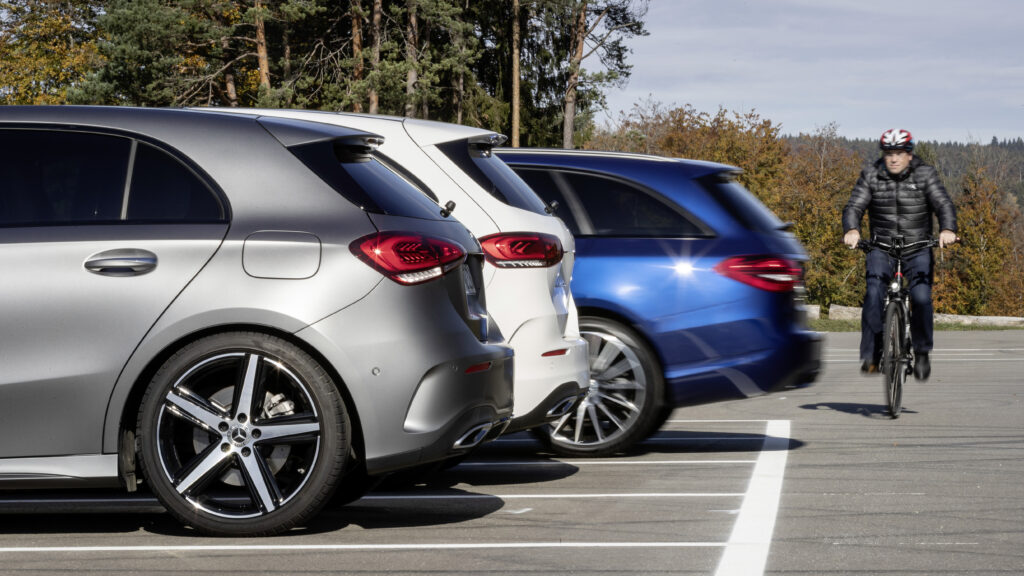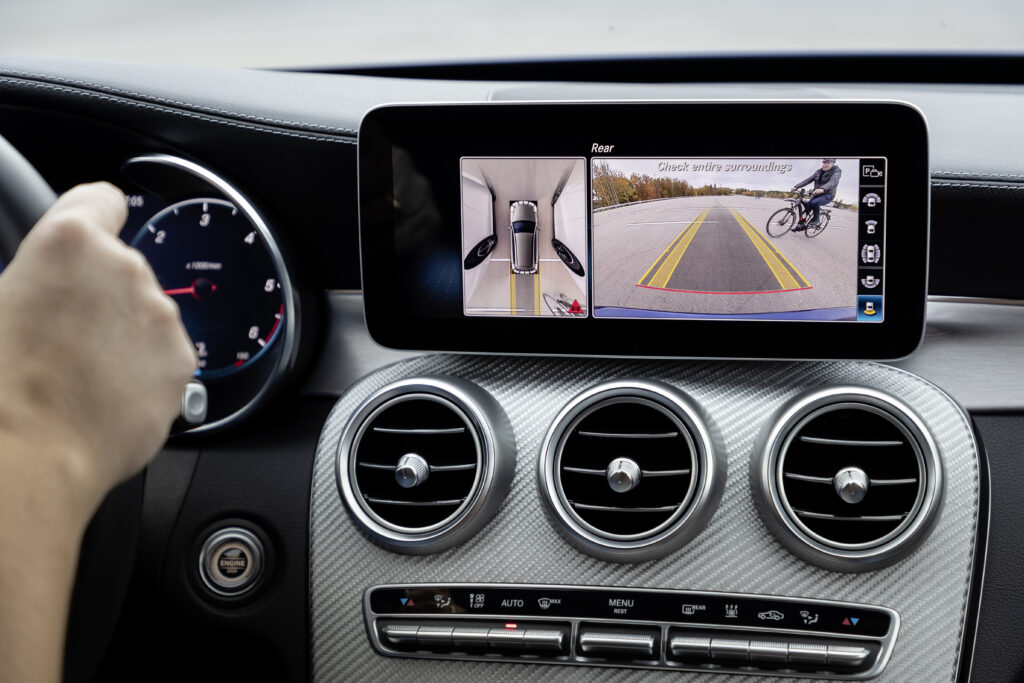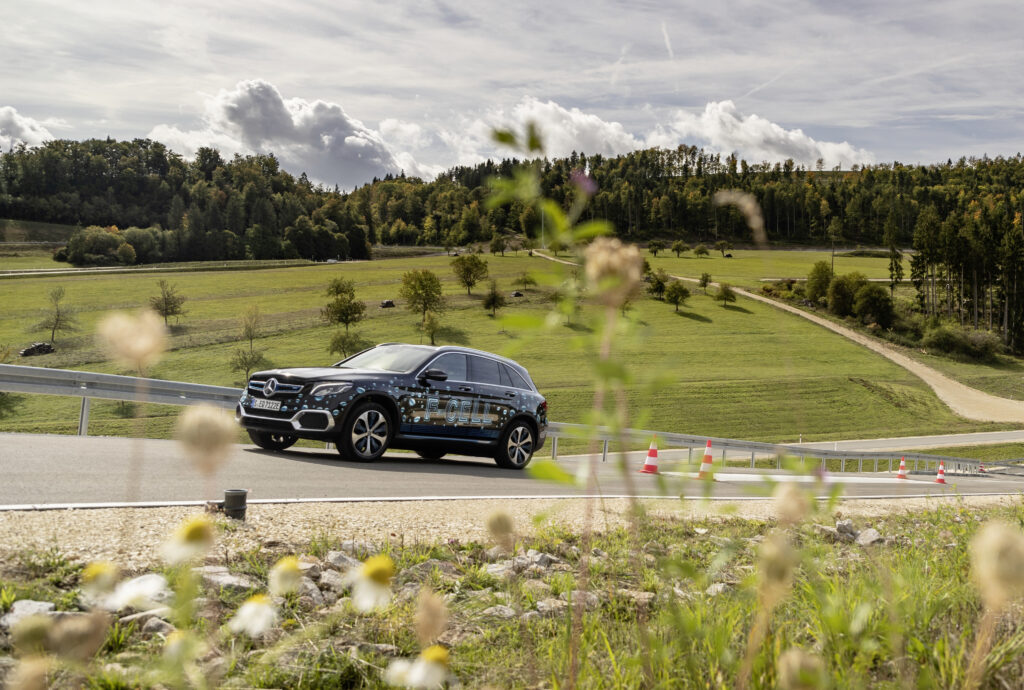At last year’s inaugural ADAS & Autonomous Vehicle Technology Expo California conference in San Jose, Nils Katzorke, a project manager at Mercedes-Benz, revealed the company’s approach to proving ground testing in the context of automated vehicles. ADAS & Autonomous Vehicle International recently spoke with Katzorke to discover the latest updates and developments.
What did your conference presentation cover?
NK: Automated driving systems are increasingly achieving the status of functioning prototypes. This development compels policymakers and automotive engineers to define processes to ensure safe driving operations, which leads to a requirement for increasing numbers of tests. There are multiple factors affecting proving ground testing and challenges that OEMs need to address. When developing cars, they need to fulfill all testing requirements and pass certification tests for road approval. The presentation showed the implications of new specifications (vehicle regulations for certification, ratings and standards) for proving ground testing procedures and provided an overview of current test protocols. I gave an outlook on future proving ground testing for automated driving systems alongside examples from the Mercedes-Benz proving ground in Immendingen, Germany.
What sorts of specifications are being implemented for proving ground testing?
NK: Test procedures for the validation and verification of automated driving systems on proving grounds can result from regulations for vehicle certifications (such as UNECE R130 and GB/T 39323), rating protocols from Euro NCAP and standards such as ISO 11270. Until 2021, vehicle regulations/certifications focused on advanced driver assistance systems and emergency systems such as steering assistance systems and autonomous emergency braking (AEB). Since 2021, specifications for higher SAE levels of automation are implemented, such as the UNECE R157 ALKS – automated lane-keeping system, which enables authorities to issue approvals for SAE Level 3 systems that are operated in dense traffic with a maximum vehicle speed of 60km/h.

Are these new specifications a help or a hindrance?
NK: They are a help. Specifications (for example, vehicle regulations) provide a framework for research and development. They define common, effective procedures to evaluate performance. Furthermore, they allow a comparison between systems and complete vehicles. However, depending on the scoring system, vehicle regulations might only define the lower threshold of performance. Nonetheless, this lower threshold needs to be defined to determine whether a vehicle is operating safely enough. In the case of vehicle regulations for certification, test procedures give official authorities a tool to assess whether a system performs well enough to participate in public road traffic. The UNECE Regulation No. 157 is a crucial social milestone for the implementation of automated driving systems. For the first time, human drivers are safely enabled to temporarily transfer the dynamic driving task to the vehicle.

What are the challenges for automated driving and proving ground testing?
NK: The task for future automated driving systems is to extend the environmental conditions in which the vehicle can reliably operate in a safe manner – i.e. the ODD (operational design domain). Hence, proving ground operators need to physically simulate challenging environmental conditions, such as heavy rain, to validate the vehicle’s performance. For this purpose, Mercedes-Benz is working with interdisciplinary teams of natural scientists and engineers to reproduce realistic conditions on proving grounds. More than 64,000,000km of road network exist globally. Simulating every road condition on a proving ground is not feasible. We have to identify critical conditions that challenge the automated driving system as well as representative scenarios for specific use cases to limit the number of test scenarios. Another challenge is differences in ‘roadmanship’. Some traffic participants drive passively, some rather aggressively. Some fully abide by the rules, others do not. For a mixed traffic environment, where human drivers and automated vehicles share roads, cautious interaction with all kinds of ‘roadmanship’ must be ensured. The holy grail is a driving system that can safely operate independently of the environmental conditions and without human decision making (Level 5). Our Drive Pilot is the first automated Level 3 system with an internationally valid road approval, and is therefore an important milestone on the way to full driving automation.

How does simulation compare with physical testing?
NK: Physical test drives provide the advantage of a realistic traffic environment. Proving grounds are essentially miniature versions or cross-sections of the real world. Hence, physical test drives are a reliable way to evaluate the vehicle’s performance. The drawback of physical test drives is that they require substantial effort compared with computer simulations. Virtual test drives do not require prototypes, transportation to proving grounds or travel. In addition, multiple virtual tests can be conducted in parallel, which reduces the overall test time. Simulations are interesting for image processing such as cameras or graphical focused units and are necessary to reach Level 5 in an economically acceptable period. However, OEMs will most likely still need physical testing in the foreseeable future. Customers feel safer when they know the vehicle has been physically tested, and trustworthy simulation methods are yet to be developed.
What does the future of proving ground testing for automated systems look like?
NK: The next milestones in automated driving development directly translate to necessary proving ground tests. The continuous extension of the ODD and higher levels of automation (for instance, SAE Levels 3 and 4) are characterized by, for example, their ability to reliably operate under adverse weather conditions and in complex traffic scenarios. Thus, I believe that the validation of system performance under adverse weather conditions such as rain, fog, snow and low sun will gain importance in proving ground tests. This impels testing service providers to come up with economical solutions. To increase the ability to validate automated driving systems in complex traffic scenarios on proving grounds, digital testing methods will become more relevant. Solutions like vehicle-in-the-loop, where digital test objects such as vehicle targets interact with ego vehicles and physical test objects, enable complex test scenarios in an economical manner. Besides specific scenarios (for example, a collision avoidance maneuver), use-case sequences such as automated trucks entering and leaving hubs could gain importance for proving ground operations.

Do you have any examples from the Mercedes-Benz proving ground in Immendingen?
NK: The number and complexity of test scenarios demanded by certifications, ratings and standards are growing. Test infrastructure requirements, for instance a curve with a radius of 500m, need to be continuously implemented at proving grounds. In my presentation, I provided insight into how the advancement team in Immendingen proactively monitors new test infrastructure demands and prioritizes what new test infrastructure we should realize first. Our versatility dashboard allows us to have an up-to-date overview of all new infrastructure requirements. As soon as new demands are integrated in the dashboard, we evaluate their impact on R&D activities and prioritize investments accordingly. Furthermore, I presented our concept to alter road marking patterns on the proving ground ad hoc during live testing operations.

What role is Immendingen playing in the development of the mobility of the future?
NK: Immendingen is one of the most modern proving grounds for automated driving and alternative energies in Europe. It is the Mercedes-Benz hub for testing activities and thus a central point for our goals to develop the future of mobility and sustainable luxury. Innovations are tested and improved in Immendingen – one example is Drive Pilot, which was mainly tested in Immendingen. The S-Class and EQS are the first vehicles with internationally valid certification for a Level 3 system. That achievement shows that we strive to be the front-runner in automated driving and safety technologies. Furthermore, we want to lead in electric driving and shape the future of mobility with new passenger transportation concepts. With our excellent team of qualified engineers, we live up to our claims.
What is the significance of Drive Pilot?
NK: The Mercedes-Benz Drive Pilot is available for the S-Class and the EQS and is the first Level 3 system that fulfills the legal requirements of the international UN-R157 regulation. With the push of a button, it allows drivers to transfer the driving task to the system if all pre-conditions are met, thus allowing the driver to spend time in the vehicle on other activities, such as checking emails, watching a movie or reading an ADAS & Autonomous Vehicle International article. We are currently offering Drive Pilot on all 13,191km of motorway in Germany. We are working intensively to obtain approval to roll out Drive Pilot for the US states of California and Nevada (Editor’s note: Drive Pilot has now been approved for use in Nevada). As a reliable, safe, certified system, Drive Pilot lays the foundation to gradually increase the ODD of such a conditionally automated driving system. Hence, it is an important milestone on the way to higher levels of driving automation.
For more on Drive Pilot, see our exclusive interview with George Massing, VP MBOX: Automated Driving, Powernet & Integration E/E, in the April 2022 issue of ADAS & Autonomous Vehicle International.
Register today to secure your place at the free-to-attend ADAS & Autonomous Vehicle Technology Expo California in Santa Clara, California.


